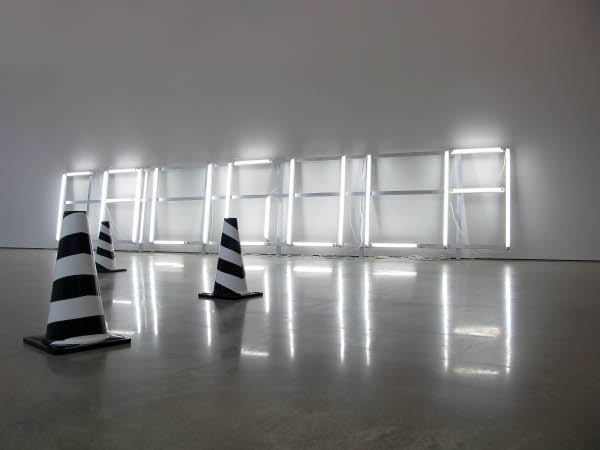 |
| Gardar Eide Einarsson, Caligula, 2010, image: Mattias Givell |
Norwegian artist Gardar Eide Einarsson’s major solo exhibition at Bonniers Konsthall, titled “Power Has a Fragrance,” marks the first time his work has been shown in Sweden. Einarsson is well aware that––as a formally trained artist often given the opportunity to display work in museum settings––he produces art from a position of privilege, and he does not shy away from criticizing his own creative role within artistic institutions. This ripe collection of declarative pieces, acute and contradictory, exists in a crossfire of communication, invoking feelings—ranging from awe to anxiety—that stem from our excessive information age. Attuned both to the history of art and to its contemporary situation, “Power Has a Fragrance” confidently carries its own weight while depending on an unveiled negotiation between artist and interested observer.
Many of Einarsson’s creations are inspired by specific current events that span the globe. Barricade (Stockholm), 2011, is a reconstructed barrier of tires and bamboo shafts: an instrument of protest used in Bangkok’s 2010 riots. The exhibition as a whole appears to be an artist’s case study of Westernized lexicons of power, subversion, and individualism. He is attracted to notions of the unwanted outlaw or extreme rebel, exploring how such an outsider becomes a tragic figure and the sole proprietor of his or her own downfall. Einarsson’s Untitled (JESUS SAVES), 2009, is a reconstruction of the rotating sign in the 1971 American crime thriller Dirty Harry. In re-creating this prop, Einarsson seems to cast the viewer in the role of this film’s sadistic villain, Scorpio. It is the visitor who now gazes on the pronouncement “JESUS SAVES,” spelled out in letters of red or blue neon––some of them illuminated, some of them burned out and defunct. Pieces such as Hate Monger, 2010, utilize only black and white, yielding effects reminiscent of classic comics and some blunt visual vocabularies of graffiti or skateboard culture—or even strategically positioned cautionary signs. Elsewhere, Einarsson’s presentation of stark how-to scenarios appropriated from American police academy manuals remind us that mistakes are being made even by those handsomely uniformed.To see the review in context, click here.








